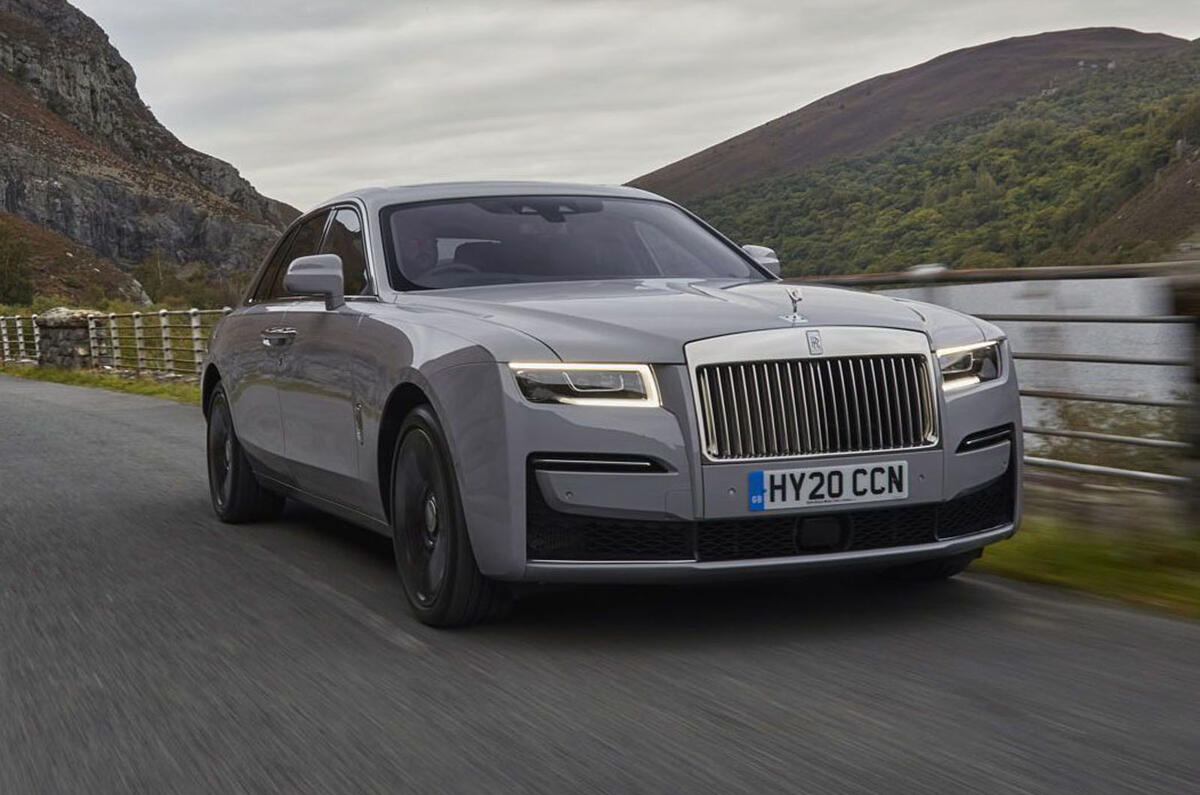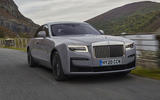What is it?
Post-opulent. An unusual way to describe a car that costs £208,000 before you add local taxes and on which you’ll have to pay extra for lambswool floor mats, you might think.
But here we are, with Rolls-Royce Ghost take two, the all-new, second generation of a car that made its debut in 2009 and went on to become the most successful Rolls of all time. A record I suspect it will lose to the Rolls-Royce Cullinan SUV before long.
Last time around, there were large elements of large BMW beneath the Ghost. BMW owns Rolls-Royce of course, following a highly amusing caper in which Volkswagen thought it had bought the entirety of Rolls-Royce Bentley in the late 1990s, before somebody pointed out that the Rolls-Royce brand didn’t actually belong to the seller.
The particularly good thing about that wheeze is that, two decades on, Rolls-Royces and Bentleys do two very distinct things and Rolls has now grown sufficiently confidently into a brand that can pin each of its models on its own, bespoke platform, without the parent company foundations. The architecture of luxury, they call it.
It’s an all-aluminium structure with some extrusions down its length that makes it relatively simple to produce cars of different lengths, wheelbases, heights and so on – and move some hardware around, to make room, for example, to allow the Ghosts’s tapered rear end. The Cullinan, the Rolls-Royce Phantom and the Ghost all sit on the platform, and replacements for the coupé and convertible will too.
In the Ghost you find effectively a Cullinan powertrain. That means a 6.75-litre V12 with two turbochargers under the bonnet, making 563bhp and, just as importantly, 627lb ft, developed at, more importantly again, 1600rpm – just 600rpm above idle.
With it driving all four wheels through an eight-speed automatic gearbox, full oomph basically from when you set off. Rolls-Royce says the unit has a Rolls, not BMW, part number, but, well, put it this way: they don’t cast ‘em in Goodwood. I don’t suppose it really matters.
There’s double-wishbone suspension at the front and a multi-link setup at the rear, with adaptive dampers – not that you can change driving modes yourself. Rolls sets it up how it likes because, honestly, owners don’t want to. This is a concierge of a car, existing basically to make your life more pleasant and easier.
There’s a 12V active anti-roll bar at the back, which takes inputs from forward-facing cameras; if it sees a shadow or a highlight, it thinks a bump is coming and can slacken right off. The front suspension instead has a mass damper in its efforts to keep the body flat. There are air springs on each corner and rear-wheel steering. Quite a lot of tech, then, but you’re not really meant to know it’s there.
This is quite a big car; at 5546mm long and 2148mm wide (including the mirrors), it’s a touch bigger than the old one. Not so differently sized inside, though, because there’s more insulation in the doors. But unsurprisingly, it's wide enough and long enough for tall occupants to sit behind tall occupants.
Tall drivers might find the B-pillar restricts visibility, mind, and optional blinds restrict rear passengers' views out too even when they’re retracted; if you want to be hidden, that’s the rub.
























































Join the debate
Add your comment
So many complaints.......
Psssst..... Rolls Royce do other colour options! ;)
@harf
Every car review should include pictures of the old & the new side by side for comparison.
Changes in the Ghost appear minor, but as you know, accumulation of minor changes often result in a very different overall perception.
For myself I definitely prefer the simplified front of Ghost 2, and the new rear appears to make the car look wider and more planted too.
What I questioned from the beginning is the lack of side view. The first promotion photos of the white car included no profile shots at all. This grey one has no straight-on side view either. My main worry re side view is the apparant increased slope of the C-pillar / rear window. The relatively upright C-pillar on Ghost 1 is one of its strongest features. Let's hope Ghost 2 keep that intact. Until there are better pics of the side view, I am unable to tell.
Ghost 1's interior is also more distinctive.
No, Mark 1 is utter perfection imho
Sometimes a new version dates the previous gen instantly but sometimes it demonstrates the innate quality of the original - and this does the latter for me.
I'm talking exterior styling here, nothing else and where i often agree with abkq i cannot this time.
I've compared the two and for such relatively minor differences, the new one loses the elegant and simple style of the exquisitely proportioned original - tho i'm struggling to put why finger on quite why that it.
The rear end has become Hyundai/S-class like with its more ill-defined and melted form, not Quattroporte tight like the original. Maybe its the new flowing D pillar which loses the 3 box saloon definition of the original. Maybe its the lost definition of the bonnet crease which results in a heavier, blocky front end and a slab of a front.
I could happily walk around and gaze at the mark 1 for some time taking in the majesty of it all, whereas this would hold me less captive. Maybe i need to get out more ...
I agree, it has lost some of
I agree, it has lost some of the elegance and lovely proportions of the first generation which is the best looking Rolls in a long time, though why they used this dreadful colour combination for a press/publicity car god only knows. Clearly improved on the technical front by the sound of, though it's predecessor was hardly lacking in that respect.